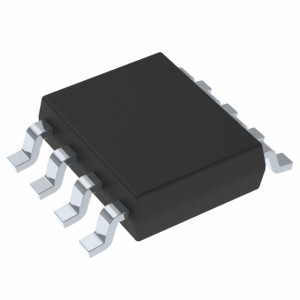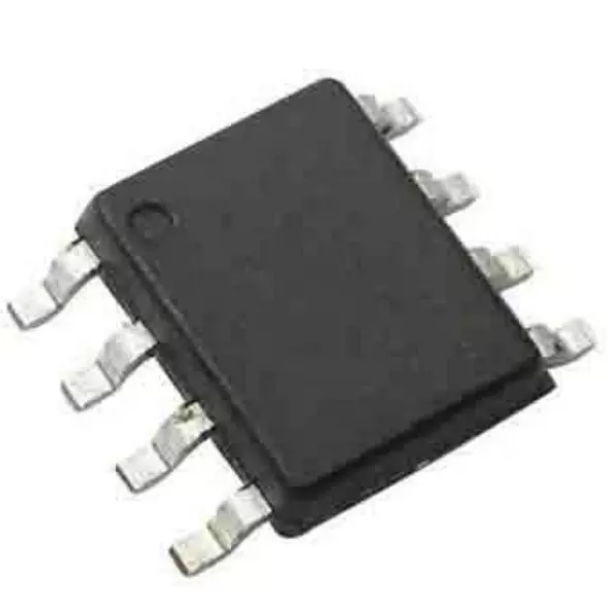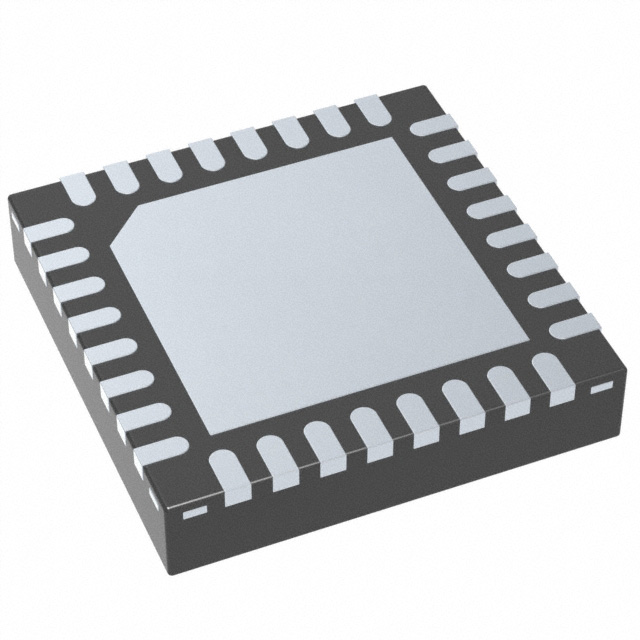Original&New ic LMR14030SDDAR switching regulator integrated chip Electronics Curcuits
Product Attributes
|
TYPE |
DESCRIPTION |
|
Category |
Integrated Circuits (ICs) PMIC - Voltage Regulators - DC DC Switching Regulators |
|
Mfr |
Texas Instruments |
|
Series |
SIMPLE SWITCHER® |
|
Package |
Tape & Reel (TR) Cut Tape (CT) Digi-Reel® |
|
SPQ |
75Tube |
|
Product Status |
Active |
|
Function |
Step-Down |
|
Output Configuration |
Positive |
|
Topology |
Buck |
|
Output Type |
Adjustable |
|
Number of Outputs |
1 |
|
Voltage - Input (Min) |
4V |
|
Voltage - Input (Max) |
40V |
|
Voltage - Output (Min/Fixed) |
0.8V |
|
Voltage - Output (Max) |
28V |
|
Current - Output |
3.5A |
|
Frequency - Switching |
200kHz ~ 2.5MHz |
|
Synchronous Rectifier |
No |
|
Operating Temperature |
-40°C ~ 125°C (TJ) |
|
Mounting Type |
Surface Mount |
|
Package / Case |
8-PowerSOIC (0.154", 3.90mm Width) |
|
Supplier Device Package |
8-SO PowerPad |
|
Base Product Number |
LMR14030 |
Difference
The difference between DC regulated switching power supplies and linear power supplies by definition
Their larger difference is the linear regulated power supply in the tube (either bipolar or MOSFET) work in the linear state, while the switching power supply in the tube work in the switching state.
1.The definition of DC regulated switching power supply
The switching power supply is relative to the linear power supply. Switching power supply is through the circuit control switching tube for high-speed channel pass and cut-off. DC power into high-frequency AC power to the transformer for voltage conversion, thereby producing the required set or group of voltage! To put it simply, a switching power supply is a transformer. Switching power supply is achieved by: rectification into DC - inverted into the required voltage AC (mainly to adjust the voltage) - and then rectified into DC voltage output.
2. The definition of linear power supply
A linear power supply is a transformer that first reduces the voltage amplitude of the alternating current and then rectifies it through a rectifier circuit to obtain pulsed direct current. It is then filtered to obtain a DC voltage with a small ripple voltage. To achieve high precision DC voltage, it must be regulated by a voltage regulator circuit.
Second, the difference between the working principle of DC regulated switching power supply and linear power supply
The working principle of switching power supply.
1. AC power input filtered by rectification into DC;
2. Through high-frequency PWM (pulse width modulation) or pulse frequency modulation (PFM) control switching tube, the DC will be added to the primary of the switching transformer;
3. The secondary of the switching transformer induces a high-frequency voltage, which is rectified and filtered to the load;
4. The output part is fed back to the control circuit through a certain circuit to control the PWM duty cycle to achieve a stable output.
The working principle of linear power supply.
1.Linear power supply mainly includes the frequency transformer, output rectifier filter, control circuit, protection circuit, etc...
The linear power supply is the first AC power through the transformer voltage, and then through the rectifier circuit rectifier filter to get the unstable DC voltage. To achieve high accuracy DC voltage, the output voltage must be adjusted by voltage feedback. This power supply technology is very mature and can achieve high stability with very little ripple and without the interference and noise that switching power supplies have. However, its disadvantage is that it requires a large and bulky transformer, the volume and weight of the required filter capacitor are also quite large, and the voltage feedback circuit is working in a linear state, so there is a certain voltage drop on the adjustment tube, in the output of a larger working current, resulting in the power consumption of the adjustment tube is too large, low conversion efficiency, but also to install a large heat sink. This power supply is not suitable for computers and other equipment needs, will gradually be replaced by switching power supply.
DC regulated switching power supply and linear power supply in the characteristics of the difference.
The main advantages and disadvantages of switching power supply
Advantages: Small size, lightweight (volume and weight of only 20-30% of the linear power supply), high efficiency (generally 60-70%, while the linear power supply is only 30-40%), their own anti-interference, a wide range of output voltage, modularity.
Disadvantages: Due to the high-frequency voltage generated in the inverter circuit, there is a certain amount of interference to the surrounding equipment. Good shielding and earthing are required.
Linear power supply features.
High stability, small ripple, high reliability, easy to make into a multi-way output continuously adjustable power supply. The disadvantage is that they are large, bulky, and relatively inefficient. This type of regulated power supply and there are many kinds, from the nature of the output can be divided into regulated voltage power supply, regulated current power supply and set of voltage, current stabilization in a stable voltage, and current (dual-stable) power supply. The output value can be divided into the fixed output power supply, band switch adjustment type, and potentiometer are continuously adjustable several. From the output, the indication can be divided into pointer indication type and digital display type.
DC regulated switching power supply and linear power supply in the characteristics of the difference.
The main advantages and disadvantages of switching power supply
Advantages: Small size, lightweight (volume and weight of only 20-30% of the linear power supply), high efficiency (generally 60-70%, while the linear power supply is only 30-40%), their own anti-interference, a wide range of output voltage, modularity.
Disadvantages: Due to the high-frequency voltage generated in the inverter circuit, there is a certain amount of interference to the surrounding equipment. Good shielding and earthing are required.
The difference between DC-regulated switching power supplies and linear power supplies in the scope of application
1. Switching power supply range of application
Switching power supply for the full voltage range, no differential voltage, you can use a different circuit topology to achieve different output requirements. The adjustment rate and output ripple are not as high as linear power supplies, and the efficiency is high. Requires many peripheral components and high cost. The circuit is relatively complex. Switching DC-regulated power supplies are mainly single-ended flyback, single-ended forward, half-bridge, push-pull, and full-bridge circuit types. The fundamental difference between it and a linear regulated power supply is that the transformer in the circuit does not work at operating frequency but at several tens of kilohertz to several megahertz. The power tube does not work in the linear zone, but in the saturation and cut-off zone, i.e. in the switching state; the switching type DC regulated power supply is thus named.
2. The scope of application of linear power supply
Linear-regulated power supplies are often used in low-voltage applications, such as LDOs need to meet a certain voltage difference. The output voltage regulation rate and ripple are better, the efficiency is lower, the need for peripheral components is less, and the cost is low. The circuit is relatively simple.
About Product
The LMR14030 is a 40 V, 3.5 A step down regulator with an integrated high-side MOSFET. With a wide input range from 4 V to 40 V, it’s suitable for various applications from industrial to automotive for power conditioning from unregulated sources. The regulator’s quiescent current is 40 µA in Sleep-mode, which is suitable for battery powered systems. An ultra-low 1 µA current in shutdown mode can further prolong battery life. A wide adjustable switching frequency range allows either efficiency or external component size to be optimized. Internal loop compensation means that the user is free from the tedious task of loop compensation design. This also minimizes the external components of the device. A precision enable input allows simplification of regulator control and system power sequencing. The device also has built-in protection features such as cycle-by-cycle current limit, thermal sensing and shutdown due to excessive power dissipation, and output overvoltage protection.













